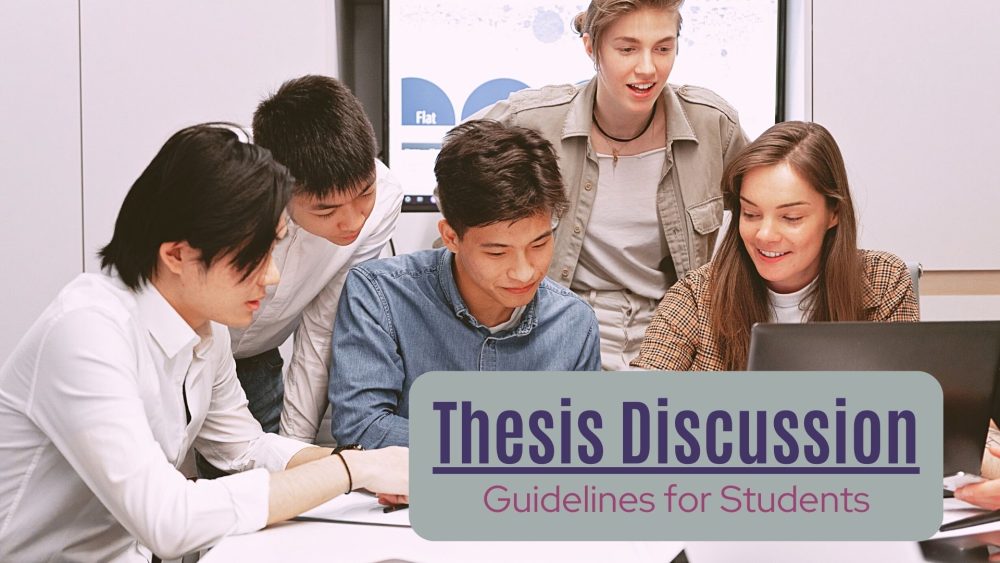A thesis summary is a highly condensed version of the longer paper. It highlights the main points that have been covered in the paper while concisely describing the content of the thesis. In most cases, the summary of a thesis and the abstract serve the same purpose. They provide an overview of all the major points of a thesis. Thus, a reader can quickly see the main content of your thesis when they read the summary. This enables them to determine whether they are interested in your work or not.
What is Included in a Thesis Summary?
When asked to summarize something, you’re simply required to condense the text to the main points. As such, a good summary of thesis research should include important elements only. It should capture the main idea in the paper and the supporting points that may be interwoven with content that is of lesser importance.
Many learners confuse a thesis statement summary with an analysis. An analysis is a discussion of the techniques, ideas, and meaning in the text. On the other hand, a summary does not entail responding or critiquing the ideas in the text. Analyzing a paper entails summarizing its content to establish the ideas that you will be analyzing. A summary does not substitute for analysis.
Here are some of the things that a Ph.D. or master thesis summary should include:
- A title that is similar to that of your thesis
- The main purpose of your thesis
- The main topic of your thesis
- The research methods used to gather the information
- The sub-sections of your thesis
- Recommendations, results, and conclusions
Essentially, a summary should present the points of the author in a straightforward structure. Therefore, read the thesis carefully to determine the major and minor components or points of the argument and summarize them in an organized manner.
A point that the author makes at the beginning and another one at the end should concisely be included in a summary of thesis to convey the main argument of the author. Thus, you should read, understand, and reconstruct the thesis into a more concise, shorter form.
How to Write an Executive Summary for Thesis
Perhaps, you have written a short thesis that is not longer than ten pages. In that case, follow these steps to write a summary thesis:
- Summarize every paragraph in one sentence
- Summarize the entire text in a single sentence
- Write a single paragraph that starts with a sentence that summarizes the entire text followed by a paragraph of summary sentences
- Rewrite and rearrange your paragraph to ensure that it’s concise and clear.
- Eliminate relatively minor and repetitive points and include transitions.
Make sure that the final summary is complete, coherent, and unified.
How to Write Summary of Ph.D. Thesis and Longer Texts
A longer text like a Ph.D. requires time to summarize. That’s because you have to read and understand the document before you summarize it. Here’s how to write a summary thesis for longer papers.
- Outline the thesis by breaking it down into different major sections. To do this, group the paragraphs that focus on a similar topic and then list down the supporting points for different sections.
- Write a sentence or two that summarizes every section.
- Create a single sentence that summarizes the entire text. Look for the topic sentence in the thesis to guide you.
- Write one paragraph or several to start the overall summary sentence. Follow it with sentences that summarize different sections.
- Rearrange and rewrite the paragraphs to make the text concise and clear while eliminating repetitious and relatively minor points. Also, include transitions in your summary.
The final summary should include the main supporting points of every idea. Make the final version coherent, unified, and complete.
When is the Summary of Findings in Thesis Necessary?
The summary and conclusion thesis serves the purpose of providing an overview of the paper. As such, students are required to write a summary in many instances. In some cases, an educator can assign learners to write a page or two after reading a paper or article. They can also be asked to come up with a summary of their text as part of their critique or response after reading a paper.
Students can also write article summaries as a part of their planning or note-taking process when writing a research paper. These summaries or their parts can be included in the final papers. When writing a research paper, an author can depend on the summary as their reference to source materials. A summary enables a writer to condense broad information so that they can explain and present the relevance of the sources that deal with a similar subject.
A paper can also be summarized in the introduction to present a precise and concise overview of the main ideas to be discussed in the rest of the text. The length of a summary should depend on the complexity and length of the paper. Additionally, the purpose of a summary should determine whether it will be a few sentences, a shorter paragraph, or even several paragraphs. You can even come across a thesis summary sample that looks like an entire paper.
Qualities of a Good Summary Thesis Sample
When learning how to write summary and conclusion in thesis, many students use samples as their guides. But, how do you know that you’re using a good thesis summary example? Here are the qualities to look for:
- Comprehensiveness: A good summary should be comprehensive. All important points should be isolated from the original passage and noted down in a brief list. These are the ideas that should form the summary because they are indispensable to the development of the thesis.
- Conciseness: An ideal summary should be free of repetitions. Do not repeat the same points even if they have been restated in the main document. The summary should be shorter while providing a brief overview of the paper. Therefore, avoid repetition of the main point and supporting ideas.
- Coherence: A good summary makes sense. It’s not a piece that looks like it’s been taken from the main document. It should also not sound like a collection of disjointed sentences from the main document that is being summarized.
- Independence: When writing a summary, your work is not to imitate the main text’s author. Instead, you are expected to showcase your style and voice in the summary. Thus, you should not just quote the main text’s author. Instead, express how you understand the document in your words. A summary should be based on your understanding and interpretation of the main ideas or points of the writer. Nevertheless, a good summary does not create distortion or misrepresentation through the introduction of criticisms or comments.
It’s also crucial to note that a good summary thesis example uses a structure that features an introduction, the body, and a conclusion. It presents the goal or purpose, results, and conclusion or recommendations. What’s more, it features logical connections of the included information without adding new information.
To write a great summary, work on this part after completing your thesis. Make sure that you’re guided by the main points of your thesis. What’s more, use a good executive summary for thesis sample to guide you. The length of your summary should depend on its purpose and the length of the main document. Once you have written the summary, read it carefully, and eliminate all errors when proofreading and editing it. Alternatively, ask our thesis editors to proofread the summary for you.










